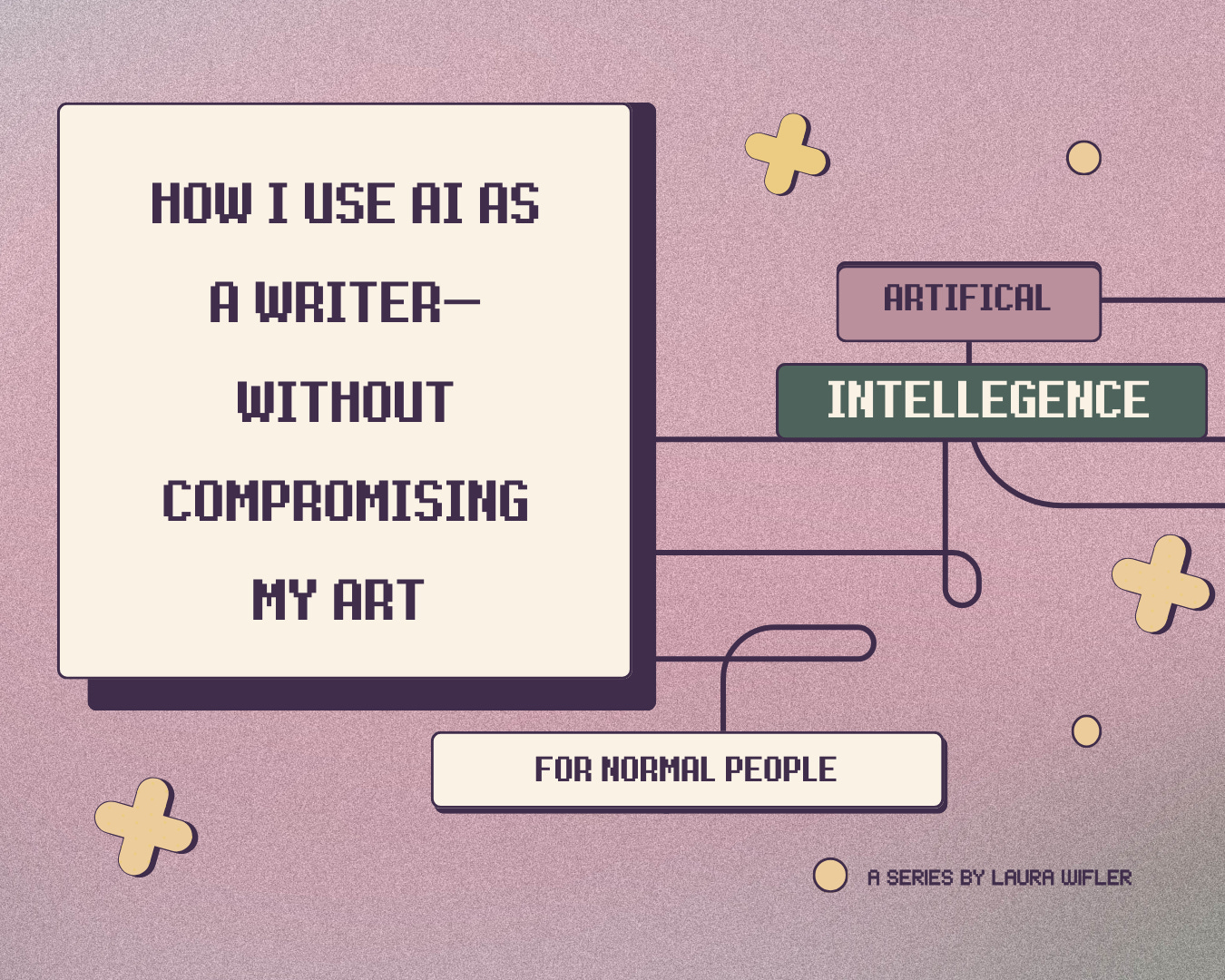Morning friends! After a brief hiatus from this topic (Launching Your Worth Never Wavers and turning in my poetry book edits nearly did me in!), I’m back to wrap up the last two posts in my “AI for Normal People” series. Here’s a recap of the ground we’ve covered so far in case you missed any of the posts:
AI Doesn’t Have to Be Scary—Here’s Why: Five Biblical Principles For Engaging With AI
The Beef Between Writers And AI Explained (And What I’m Doing About It)
Be sure to read that last essay, “The Beef” before continuing on to this one as it will provide some helpful context. In that post I briefly mentioned that in writing, we need to distinguish between art—which is personal, expressive, and human-soul driven—and applied communication, which prioritizes an action (click, purchase, etc.) over a feeling.
This is what we’ll dig into today. As a writer or artist—anyone who creates—what guardrails should we be thinking about between these two forms of communication? How can we work with an AI as a co-intelligence of sorts, without violating our own consciences, Biblical ethics, and the integrity of our fields?
I believe the first thing we need to do is to define “art.” From Oxford Languages: Art is the expression or application of human creative skill and imagination, typically in a visual form such as painting or sculpture, producing works to be appreciated primarily for their beauty or emotional power.
It’s important for us to define what art is, because this is the main area many of us writers are hung up on—and for good reason. Art: Poetry, painting, sculpting, essay, memoir, etc., is personal. Part of the reason we value art so much and see it for its “beauty or emotional power” is because through it we feel known and become connected to one another.
When I create art, (this essay with all my thoughts, opinions, voice; a poem; a children’s book, etc.) I’m bringing my life experience to bear on the work and I’m willing to bet you can feel it. There’s an X factor there.
It is the human touch that brings intent and story to the work, not just content. AI can generate words, but it can’t generate meaning. When we interact with human-made art, I believe, deep down, we can sense another soul on the other side of the work.
But take something like podcast show notes copy. I don’t think many people would say that’s “art.” While it can take technical skill and even a great eye for aesthetics and design to write good show notes, its end game isn’t “beauty or emotional power.” Its end goal is to drive action—to sell a product, gain a click, encourage a share. It’s not art.
It doesn’t mean art won’t elicit action or that applied communication doesn’t include artistry, but that there is a difference in the intent of why the work was done.
And it is this nuance I believe we are missing from the AI conversation. While people are going to land in different specific spots, it seems there is thankfully, likely much general consensus that art should be Human Made, but there is potentially more room for a writer to use AI in some of the utilitarian communication points.
Please couch the following in this advice: No matter how you engage with AI, you should always be checking how you are walking with integrity and honoring human dignity—avoiding AI in areas that people believe they are talking with you, a living person. In addition, keep in mind that if you are not personally very good at what you are asking AI to do, then you likely will not be very good at getting AI to do it. Meaning, if you are not experienced and proficient in thinking through editorial calendars, you probably should not lean on AI to do it for you. Rarely (never?) have I seen AI able to complete a job well, start to finish. My advice? Unless you are experienced at what you do, you likely should not be using AI to help, because you won’t recognize a bad job when you see it. Cut your teeth in the real world first, then use the virtual one to make you more efficient where you can.
What It Looks Like To Practically Use AI as a Professional Writer


